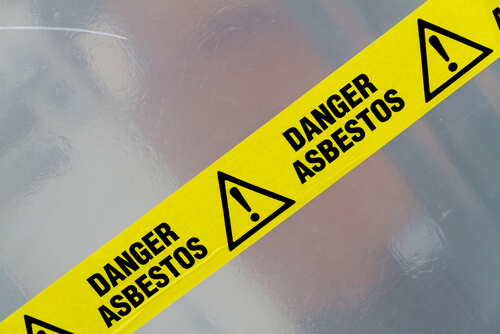Why is Asbestos Still Legal in the United States?

Asbestos is an extremely harmful mineral that causes serious diseases such as mesothelioma and lung cancer.
Its use has been documented back to ancient times, although it was during the Industrial Revolution – and especially during the 20th century – that asbestos was used in everything from insulation in buildings to brake pads on vehicles.
The harmful effects of this toxic mineral were first documented in the early 1900s, but it wasn’t until the 1970s that the United States government started to regulate its use. Since that time, there have been a number of pieces of legislation attempting to ban the substance altogether.
History of Attempts to Ban Asbestos in the U.S.
Since learning of the harmful effects of asbestos, there have been many pieces of legislation attempting to reduce the use of asbestos or ban it altogether. Although some of these laws have passed and are still in effect today, not all of them were as successful.
The Clean Air Act was passed in 1963, which attempted to control and reduce the amount of air pollution in the country. In 1970, the Environmental Protection Agency (EPA) was formed and the Clean Air Act was placed under its control. The agency then provided standards for air pollutants, and listed asbestos as one of the hazards.
In 1976, the Toxic Substances Control Act (TSCA) was passed, which regulated how chemicals were manufactured, used, and disposed of. The Act includes many dangerous substances, including asbestos. Still, there were issues with the TSCA, such as the fact that it didn’t give authority to regulatory agencies to enforce the regulations in the Act. In 2015, the TSCA Modernization Act was enforced, which addressed these issues and helped the EPA manage toxic substances, including asbestos.
Although legislation before it included all toxic substances and materials, the Asbestos Hazard Emergency Response Act (AHERA) was the first of its kind to focus specifically on asbestos. This law requires school administrators to inspect schools for asbestos and create plans that would reduce or prevent hazards from the mineral in all school buildings. Today, the law still stands and administrators must regularly inspect schools and use accredited specialists when performing any work on the buildings in order to minimize the risk.
In the late 1980s, the EPA took one of its biggest actions against the use of asbestos. During this time, the agency published its final rule in the Federal Register, known as the Asbestos Ban and Phase-Out Rule. This rule banned almost every product that contained asbestos, with an exception for military use.
The asbestos industry fought back against this rule. It argued that the EPA’s research was flawed and that the ban would have a negative effect on the nation’s economy, as it would greatly disrupt trade relations with other countries, namely Canada. In the landmark case, Corrosion Proof Fittings v. EPA, the Fifth Circuit Court of Appeals in New Orleans struck down the EPA’s rule, reversing the ban and allowing the widespread use of asbestos to continue. Even with this decision, products that did not historically contain asbestos were not allowed to be produced with the toxic mineral. This is now known as the “new uses ban.”
Legislators tried once again to ban asbestos products with The Bruce Vento Ban Asbestos and Prevent Mesothelioma Act of 2007. This Act would essentially prohibit the manufacturing, importing, processing, and distribution of asbestos products in the country. The goal of the Act was to remove all asbestos products from the market within two years. When the bill was first introduced, it received bipartisan support. However, it died in Congress in 2008 and it has not since been put back up for a vote.
What Asbestos Products Are Banned?
Although many of the laws attempting to limit or completely ban asbestos products have failed, there are still some products containing asbestos that the EPA has banned completely. In total, there are six of these types of products including:
- Flooring felt
- Rollboard
- Commercial paper
- Corrugated paper
- Specialty paper
- Any new uses of asbestos
The only other product banned are any products that contain asbestos and are applied as a spray, such as textured ceilings.
What Types of Products Are Still Made with Asbestos?
Asbestos is still widely used today in many other products. Many of these products are used for construction, such as:
- Cement corrugated sheets
- Cement flat sheets
- Roofing products
- Millboards
- Pipeline wraps
Being used widely and historically in automotive parts, asbestos is still largely used in this industry today. According to the EPA, components of automatic transmissions still include asbestos. Additionally, clutch facings, brake pads, brake linings, gaskets, and brake blocks also still contain the harmful mineral.
During the 1850s, the Parisian Fire Brigade wore masks and other protective gear that was made with asbestos. Today, that’s a practice that still continues. Certain heat-resistant clothing, such as firefighter uniforms, are also still made with asbestos.
This is especially concerning because firefighters are already at very high risk for inhaling asbestos. As they rush into burning buildings, the asbestos found in wallboards and plaster is dispersed into the air, which firefighters can then inhale. While asbestos in these uniforms may help protect firefighters from fire and flames, there is still a chance these clothes can catch fire. If they do, the asbestos fibers woven into the material can get distributed into the air, which firefighters can then inhale.
Although some forms of asbestos have been banned, there is still a long way to go to protect people from this deadly toxin.
If You’ve Been Exposed to Asbestos, Our Massachusetts Asbestos Attorneys Can Help
Tragically, millions of people have been exposed to asbestos and have developed fatal diseases as a result. If you’ve been exposed and have now contracted a disease such as mesothelioma or other cancers, it’s important you speak to our Boston asbestos attorneys today.
At The Law Offices of Michael P. Joyce, P.C., we have seen the devastating effects of asbestos exposure firsthand. We want to help victims suffering from it.
If you’ve been exposed to asbestos and are now sick because of it, you may be eligible for compensation. There may be many options for claiming compensation, and we will explain them all and guide you through the appropriate process. If you’re sick from asbestos exposure, call us today for a free consultation.

